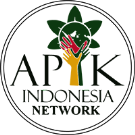PENILAIAN POTENSI OBJEK WISATA AIR TERJUN SARAY BRUNYAU DESA RIAM PIYANG KECAMATAN BUNUT HULU KABUPATEN KAPUAS HULU
DOI:
10.29303/jbl.v5i1.862Published:
2022-03-08Issue:
Vol. 5 No. 1 (2022)Keywords:
ekowisata, potensi wisata, riam piyangArticles
Downloads
How to Cite
Downloads
Metrics
Abstract
Kapuas Hulu Regency is an area that has a variety of flora and fauna and has natural wealth and natural beauty that has the potential as a tourist attraction so that it must be developed, one of which is Saray Brunyau Waterfall in the forest area of ​​Riam Piyang Village, Bunut Hulu District, Kapuas Hulu Regency. Saray Brunyau Waterfall has the potential to be used as a tourist spot because the area has natural beauty and unspoiled scenery and has a natural panorama consisting of trees such as meranti trees (Shorea spp.), rengas trees (Gluta renghas, L), and many animals. wild animals such as monkeys, lempiau and other wildlife that adorn the waterfall area itself. Therefore Saray Brunyau Waterfall needs to be used as a place of research to get its potential value so that its feasibility can be known or developed into a tourist destination. The purpose of the study was to obtain the value of the potential attraction of Saray Brunyau Waterfall. The research method is a survey and direct observation in the field as well as conducting interviews with questionnaires using accidental sampling techniques to determine respondents and giving an assessment of each element and sub-element using the 2003 PHKA ODTWA assessment guideline. The elements assessed are a tourist attraction, accessibility, accommodation. , supporting infrastructure, regional security, and the availability of clean water. The results of the overall score get a total value of 2432/5 = 486.4 or fall into the classification category (B) meaning that it is quite potential to be developed into a tourist destination.
References
[PHKA] Perlindungan Hutan dan Konservasi Alam. 2003. Pedoman Analisis Daerah Operasi Obyek dan Daya Tarik Wisata Alam (ADO-ODTWA). Bogor.Direktorat Jendral Perlindungan Hutan dan Konservasi Alam
Aditiawati, P., Indriani Astuti, D., Suantika, G., & M. Simatupang, T. 2016. Pengembangan potensi lokal di Desa Panawangan sebagai model desa vokasi dalam pemberdayaan masyarakat dan peningkatan ketahanan pangan nasional. Jurnal Sosioteknologi, 15(1): 59–67.
Devy, R.B.Soemanto. 2017. Pengembangan obyek dan daya tarik wisata alam sebagai daerah tujuan wisata di Kabupaten Karanganyar. Jurnal Sosiologi DILEMA. Vol. 32 No. (1).
Dinas Komunikasi, Informatika dan Statistik. Kabupaten Kapuas Hulu. 2021. Potens Obyek Wisata. www.kapuashulukab.go.id. [26 April 2021]
Eichhorn, V. and Buhalis, D., 2011. Accessibility – a key objective for the tourism industry. IN Buhalis, D. & Darcy, S. (Eds.) Accessible Tourism: Concepts and Issues, (pp. 46-61). Bristol: Channel View Publications.
Erni Y, Rinekso S, Hadi SA, Bambang PN, Analisis Potensi Ekowisata Heart Of Borneo di Taman Nasional Betung Kerihun Dan Danau Sentarum Kabupaten Kapuas Hulu. Jurnal Pengelolaan Sumberdaya Alam Dan Lingkungan. 8(1): 44-54
Ghani, Y. (2015). Pengembangan Sarana Prasarana Destinasi Pariwisata Berbasis Budaya di Jawa Barat. Jurnal Pariwisata, II (2), 98–110.
Karsudi, R. Soekmadi, H. Kartodihardjo, 2010. Strategi Pengembangan Ekowisata di Kabupaten Kepulauan Yapen Provinsi Papua. Artikel Ilmiah. Jurnal Manajemen Hutan Tropika XVI (3), pp. 148-154
Lidia K, Fahrizal, Dirhamsyah. 2016. Penilaian Potensi Daya Tarik Obyek Wisata Danau Mupa Kencana Kecamatan Putussibau Utara Kabupaten Kapuas Hulu. Jurnal Hutan Lestari. 4(4), 472 – 477
Maharani, I. 2016. Analisis kelayakan potensi ekowisata pada kawasan wisata alam Bungi Kecamatan Kokalukuna Kota Baubau.
Paramita M, Muhlisin S, Palawa I. 2018. Peningkatan ekonomi masyarakat melalui pemanfaatan sumber daya lokal. Qardhul Hasan: Media Pengabdian Kepada Masyarakat, 4(1): 19-30.
Saparuddin, 2010. Pemanfaatan Air Tanah Dangkal Sebagai Sumber Air Bersih di Kampus Bumi Bahari Palu. Jurnal SMARTek. 8(2), pp. 143-152
Sumarabawa, I. G.A., Wesnawa, I. G.A dan Astawa, I. B.M. 2013. Ketersediaan Aksesibilitas dan Sarana Prasarana Pendukung Wisata Pantai Pasir Putih Karangasem.
Undang-Undang Republik Indonesia Nomor 10.Tahun 2009 Tentang Kepariwisataan
Wawan. 2011. Ekowisata Berkelanjuan. Yogyakarta: Gadjah Madah University Press.
Yuliani Y, Rahdriawan M. 2014. Kinerja Pelayanan Air Bersih Berbasis Masyarakat di Tugurejo Kota Semarang. Jurnal Pembangunan Wilayah & Kota. 10(3):248-264.
Zaenuri, Muchamad. 2012. Perencanaan Strategis Kepariwisataan Daerah: Konsep dan Aplikasi. Jogjakarta: e-Gov Publishing.
Author Biography
Fahrid Mizwar, Universitas Tanjungpura
License
Copyright (c) 2022 Jurnal Belantara

This work is licensed under a Creative Commons Attribution 4.0 International License.
The Authors submitting a manuscript has understood that if accepted for publication on Jurnal Belantara, the copyright of the article shall be assigned to Jurnal Belantara of the Forest Study Program University of Mataram as the publisher of the journal. Copyright encompasses rights to reproduce and deliver the article in all forms and media, including reprints, photographs, microfilms, and any other similar reproductions, as well as translations.
Jurnal Belantara of the Forest Study Program University of Mataram and the Editors make every effort to ensure that no wrong or misleading data, opinions, or statements be published in the journal. In any way, the contents of the articles and advertisements published in Jurnal Belantara are the sole responsibility of their respective authors and advertisers.
We strongly encourage that manuscripts be submitted to the online journal system in http://belantara.unram.ac.id/index.php/JBL/index. Authors are required to create an account and submit the manuscripts online. For submission inquiries, please follow the submission instructions on the website. If the author has any problems with the online submission, please contact Editorial Office at the following email: [email protected]
Contributors are responsible for obtaining permission to reproduce any materials, including photographs and illustrations, for which they do not hold the copyright and for ensuring that the appropriate acknowledgments are included in the manuscript.
Users of this website will be licensed to use materials from this website following the Creative Commons Attribution 4.0 International License. No fees charged. Please use the materials accordingly.











